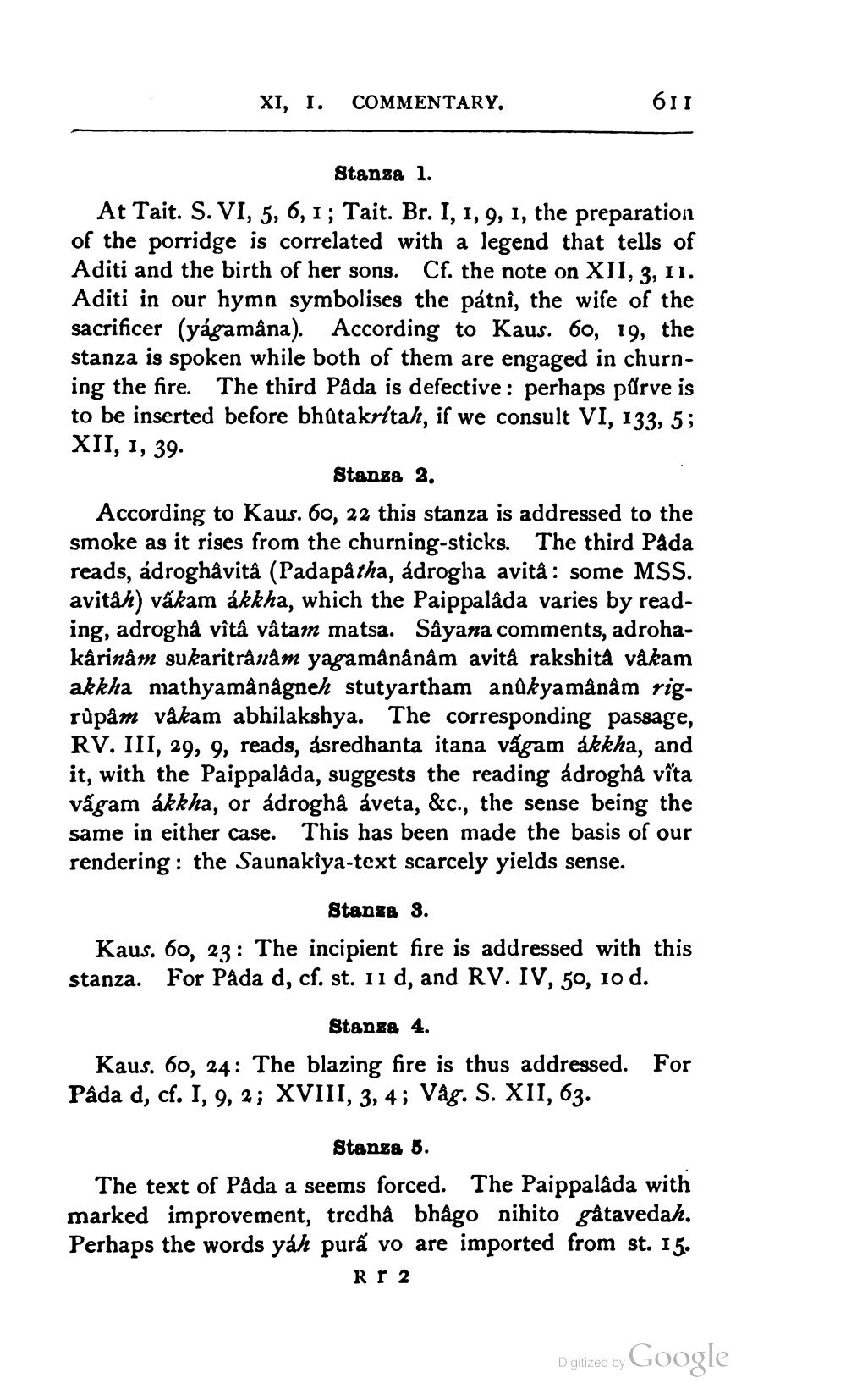________________
XI, 1. COMMENTARY.
611
Stanza 1. At Tait. S. VI, 5, 6, 1; Tait. Br. I, 1, 9, 1, the preparation of the porridge is correlated with a legend that tells of Aditi and the birth of her sons. Cf. the note on XII, 3, 11. Aditi in our hymn symbolises the pátnî, the wife of the sacrificer (yágamâna). According to Kaus. 60, 19, the stanza is spoken while both of them are engaged in churning the fire. The third Påda is defective: perhaps pūrve is to be inserted before bhatakrltah, if we consult VI, 133, 5; XII, 1, 39.
Stanza 2. According to Kaus. 60, 22 this stanza is addressed to the smoke as it rises from the churning-sticks. The third Påda reads, ádroghâvità (Padapatha, ádrogha avitâ : some MSS. avitåh) vákam ákkha, which the Paippalåda varies by reading, adroghà vîtâ vâtain matsa. Såyana comments, adrohakârinam sukaritrånam yagamânânâm avità rakshità vakam akkha mathyamânågneh stutyartham anukyamânâm rigrûpåm vàkam abhilakshya. The corresponding passage, RV. III, 29, 9, reads, ásredhanta itana vágam ákkha, and it, with the Paippalâda, suggests the reading ádroghå víta vágam ákkha, or ádrogha áveta, &c., the sense being the same in either case. This has been made the basis of our rendering: the Saunakîya-text scarcely yields sense.
Stanza 3. Kaus. 60, 23: The incipient fire is addressed with this stanza. For Pada d, cf. st. 11 d, and RV. IV, 50, 10 d.
Stanga 4. Kaus. 60, 24: The blazing fire is thus addressed. For Pada d, cf. I, 9, 2; XVIII, 3, 4; Våg. S. XII, 63.
Stanza 8. The text of Pada a seems forced. The Paippalada with marked improvement, tredha bhago nihito gâtavedah. Perhaps the words yah pura vo are imported from st. 15.
Rr 2
Digized by Google




